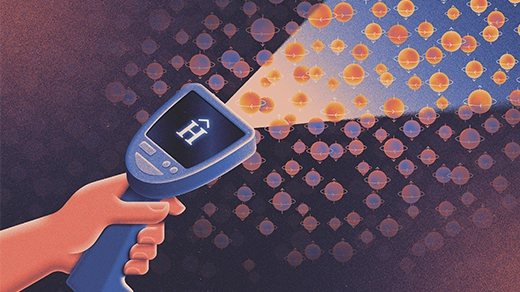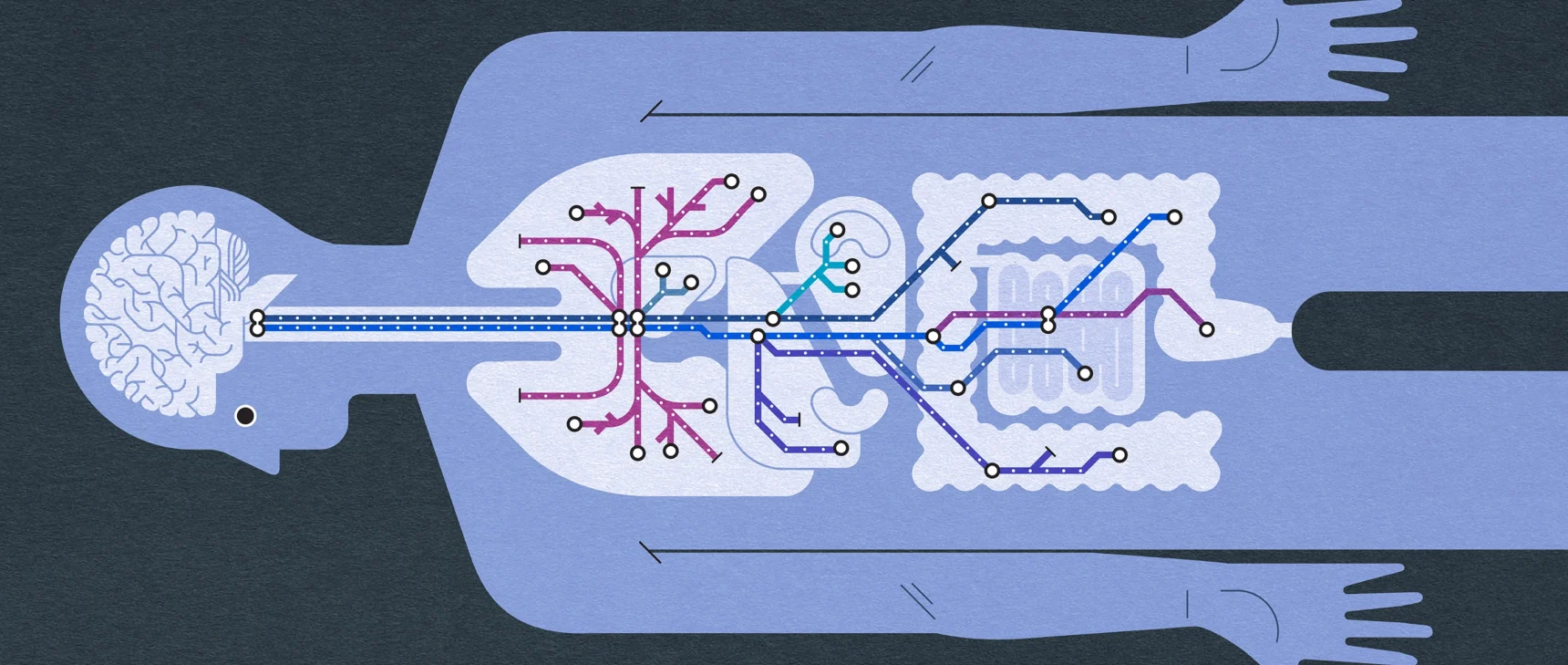Computer Scientists Prove That Heat Destroys Quantum Entanglement
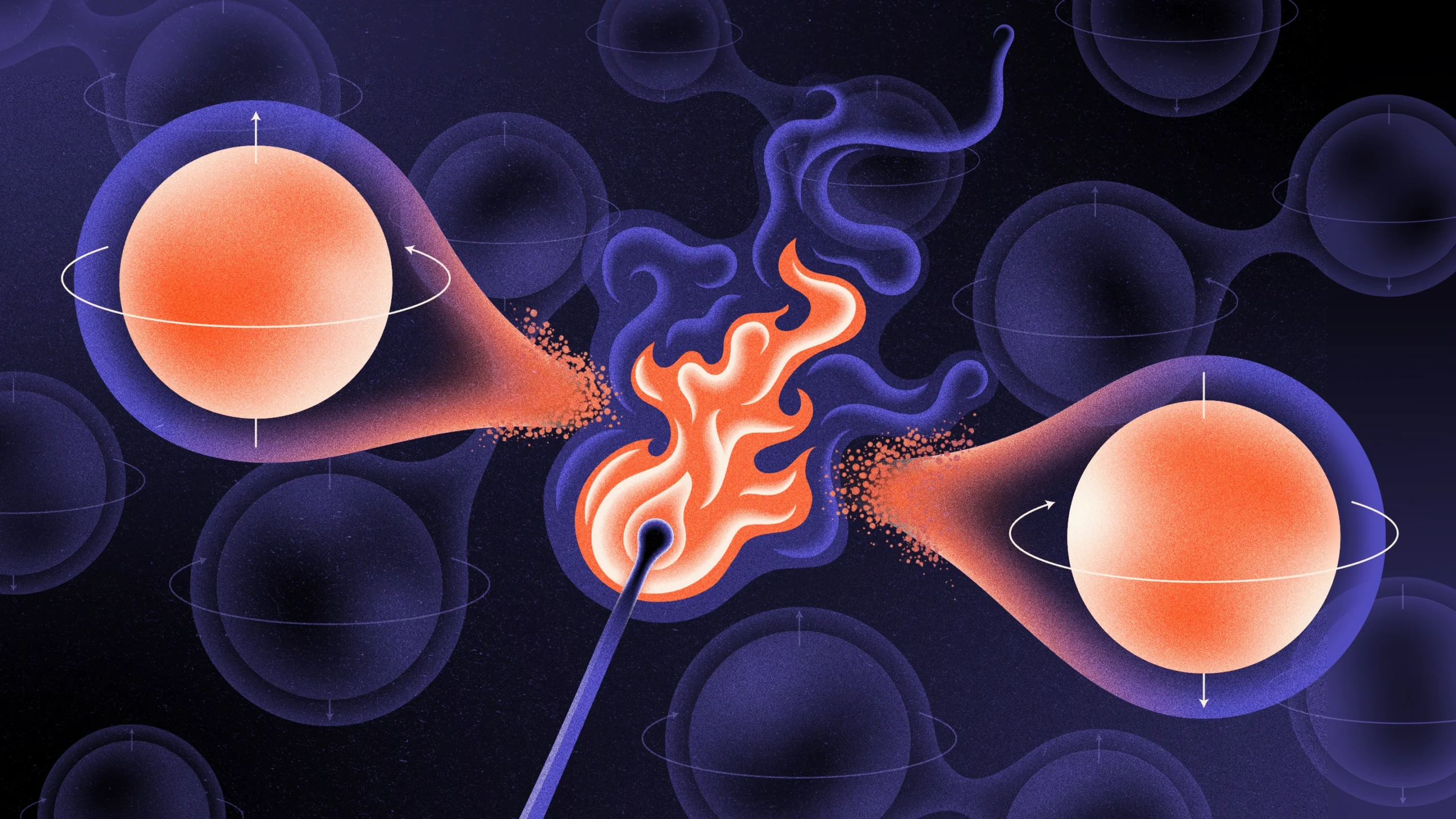
Kristina Armitage/Quanta Magazine
Introduction
Nearly a century ago, the physicist Erwin Schrödinger called attention to a quirk of the quantum world that has fascinated and vexed researchers ever since. When quantum particles such as atoms interact, they shed their individual identities in favor of a collective state that’s greater, and weirder, than the sum of its parts. This phenomenon is called entanglement.
Researchers have a firm understanding of how entanglement works in idealized systems containing just a few particles. But the real world is more complicated. In large arrays of atoms, like the ones that make up the stuff we see and touch, the laws of quantum physics compete with the laws of thermodynamics, and things get messy.
At very low temperatures, entanglement can spread over long distances, enveloping many atoms and giving rise to strange phenomena such as superconductivity. Crank up the heat, though, and atoms jitter about, disrupting the fragile links that bind entangled particles.
Physicists have long struggled to pin down the details of this process. Now, a team of four researchers has proved that entanglement doesn’t just weaken as temperature increases. Rather, in mathematical models of quantum systems such as the arrays of atoms in physical materials, there’s always a specific temperature above which it vanishes completely. “It’s not just that it’s exponentially small,” said Ankur Moitra of the Massachusetts Institute of Technology, one of the authors of the new result. “It’s zero.”
Researchers had previously observed hints of this behavior and dubbed it the “sudden death” of entanglement. But their evidence was mostly indirect. The new finding establishes a much stronger limit on entanglement in a mathematically rigorous way.
Curiously, the four researchers behind the new result aren’t even physicists, and they didn’t set out to prove anything about entanglement. They’re computer scientists who stumbled on the proof accidentally while developing a new algorithm.
Regardless of their intent, the results have excited researchers in the area. “It’s a very, very strong statement,” said Soonwon Choi, a physicist at MIT. “I was very impressed.”
Finding Equilibrium
The team made their discovery while exploring the theoretical capabilities of future quantum computers — machines that will exploit quantum behavior, including entanglement and superposition, to perform certain calculations far faster than the conventional computers we know today.
One of the most promising applications of quantum computing is in the study of quantum physics itself. Let’s say you want to understand the behavior of a quantum system. Researchers need to first develop specific procedures, or algorithms, that quantum computers can use to answer your questions.

Ewin Tang helped devise a new fast algorithm for simulating how certain quantum systems behave at high temperatures.
Xinyu Tan
But not all questions about quantum systems are easier to answer using quantum algorithms. Some are equally easy for classical algorithms, which run on ordinary computers, while others are hard for both classical and quantum ones.
To understand where quantum algorithms and the computers that can run them might offer an advantage, researchers often analyze mathematical models called spin systems, which capture the basic behavior of arrays of interacting atoms. They then might ask: What will a spin system do when you leave it alone at a given temperature? The state it settles into, called its thermal equilibrium state, determines many of its other properties, so researchers have long sought to develop algorithms for finding equilibrium states.
Whether those algorithms really benefit from being quantum in nature depends on the temperature of the spin system in question. At very high temperatures, known classical algorithms can do the job easily. The problem gets harder as temperature decreases and quantum phenomena grow stronger; in some systems it gets too hard for even quantum computers to solve in any reasonable amount of time. But the details of all this remain murky.
“When do you go to the space where you need quantum, and when do you go to the space where quantum doesn’t even help you?” said Ewin Tang, a researcher at the University of California, Berkeley and one of the authors of the new result. “Not that much is known.”
In February, Tang and Moitra began thinking about the thermal equilibrium problem together with two other MIT computer scientists: a postdoctoral researcher named Ainesh Bakshi and Moitra’s graduate student Allen Liu. In 2023, they’d all collaborated on a groundbreaking quantum algorithm for a different task involving spin systems, and they were looking for a new challenge.
“When we work together, things just flow,” Bakshi said. “It’s been awesome.”
Before that 2023 breakthrough, the three MIT researchers had never worked on quantum algorithms. Their background was in learning theory, a subfield of computer science that focuses on algorithms for statistical analysis. But like ambitious upstarts everywhere, they viewed their relative naïveté as an advantage, a way to see a problem with fresh eyes. “One of our strengths is that we don’t know much quantum,” Moitra said. “The only quantum we know is the quantum that Ewin taught us.”
The team decided to focus on relatively high temperatures, where researchers suspected that fast quantum algorithms would exist, even though nobody had been able to prove it. Soon enough, they found a way to adapt an old technique from learning theory into a new fast algorithm. But as they were writing up their paper, another team came out with a similar result: a proof that a promising algorithm developed the previous year would work well at high temperatures. They’d been scooped.
Sudden Death Reborn
A bit bummed that they’d come in second, Tang and her collaborators began corresponding with Álvaro Alhambra, a physicist at the Institute for Theoretical Physics in Madrid and one of the authors of the rival paper. They wanted to work out the differences between the results they’d achieved independently. But when Alhambra read through a preliminary draft of the four researchers’ proof, he was surprised to discover that they’d proved something else in an intermediate step: In any spin system in thermal equilibrium, entanglement vanishes completely above a certain temperature. “I told them, ‘Oh, this is very, very important,’” Alhambra said.
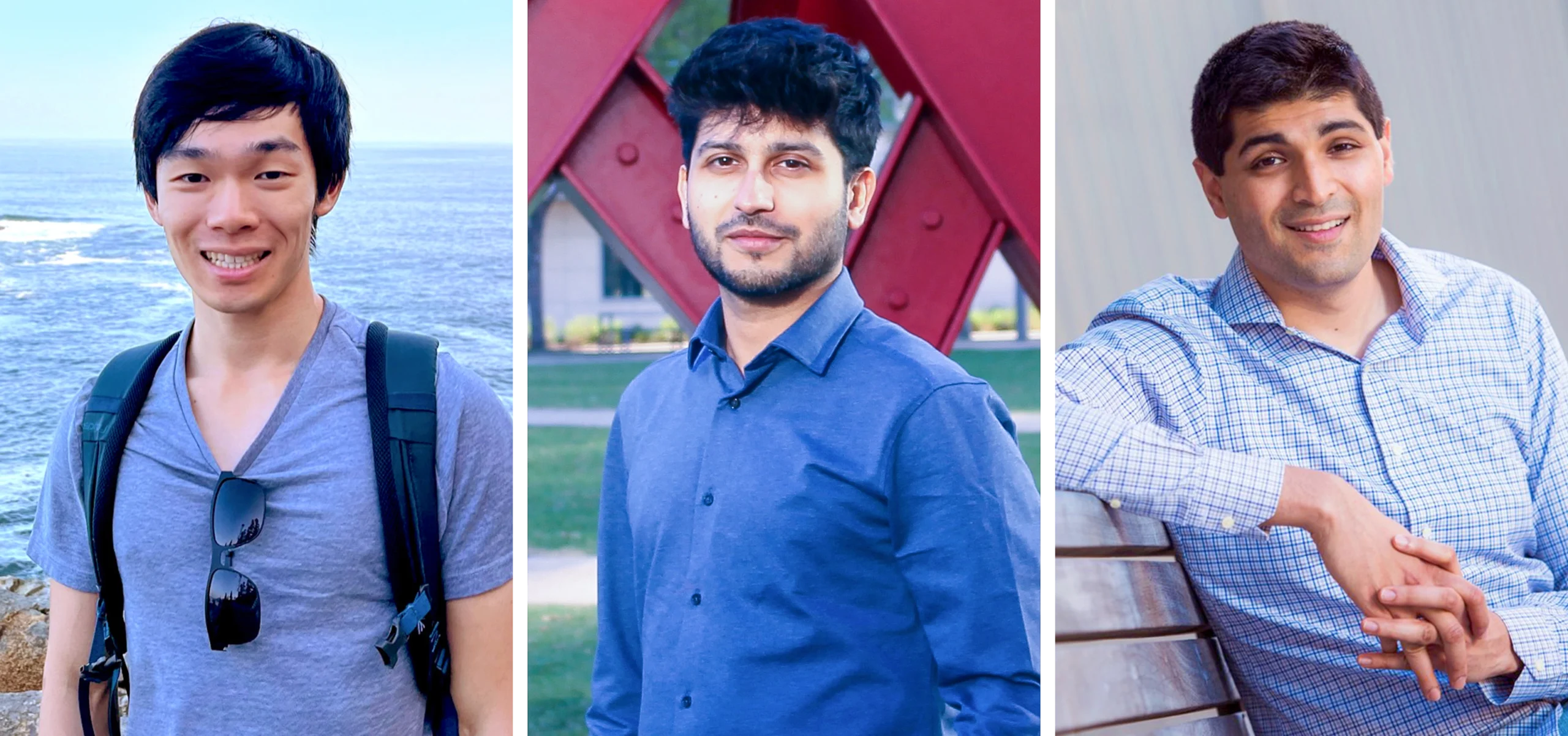
From left: Allen Liu, Ainesh Bakshi and Ankur Moitra collaborated with Tang, drawing on their background in a different branch of computer science. “One of our strengths is that we don’t know much quantum,” Moitra said.
From left: Courtesy of Allen Liu; Amartya Shankha Biswas; Gretchen Ertl
The team quickly revised their draft to highlight the accidental result. “It turns out that this just falls out of our algorithm,” Moitra said. “We get more than what we bargained for.”
Researchers had observed this sudden death of entanglement since the 2000s, in experiments and simulations on ordinary classical computers. But none of those earlier works had been able to measure the disappearance of entanglement directly. They had also studied the phenomenon only in small systems, which aren’t the most interesting ones.
“It could have been that for larger and larger systems you would have to go to higher and higher temperatures to see lack of entanglement,” Alhambra said. In that case, the sudden-death phenomenon might happen at such high temperatures as to be irrelevant in real materials. The only previous theoretical limit, from 2003, left open that possibility. Instead, Tang and her collaborators showed that the temperature at which entanglement vanishes doesn’t depend on the total number of atoms in the system. The only thing that matters is the details of the interactions between nearby atoms.
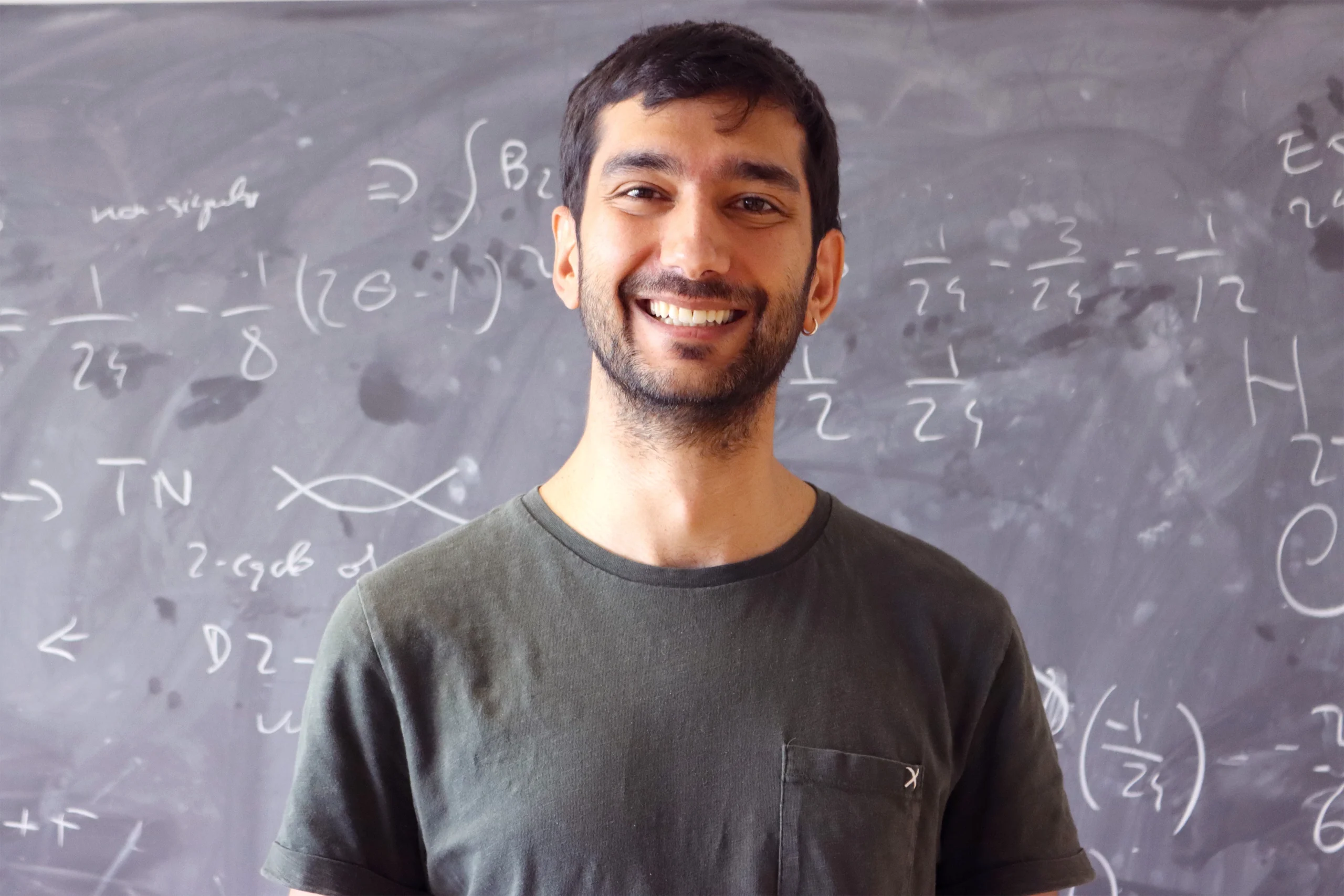
Álvaro Alhambra, a physicist working on the same problem as Tang, Moitra, Bakshi and Liu, realized they had accidentally proved a new result about quantum entanglement while developing their algorithm.
Laura Marcos
The approach they used in their proof was itself unusual. Most algorithms for finding thermal equilibrium states are inspired by the way real physical systems approach equilibrium. But Tang and company used techniques far removed from quantum theory.
“That’s what’s so amazing about this paper,” said Nikhil Srivastava, a computer scientist at Berkeley. “The proof kind of ignores the physics.”
The Search Continues
The four researchers’ proof that high-temperature spin systems lack any entanglement helps explain another interesting feature of their new algorithm: Very little of it is actually quantum. True, the algorithm’s output — a full description of how the atoms in a spin system are oriented in thermal equilibrium — is too unwieldy to store on a classical machine. But other than the last step that generates this output, every part of the algorithm is classical.
“It’s essentially the most trivial quantum computation,” Liu said.
Tang has a long track record of discovering “dequantization” results — proofs that quantum algorithms aren’t actually necessary for many problems. She and her collaborators weren’t trying to do that this time, but the proof of vanishing entanglement that they stumbled into amounts to an even more extreme version of dequantization. It’s not just that quantum algorithms don’t offer any advantage in a specific problem involving high-temperature spin systems — there’s nothing quantum about those systems whatsoever.
But that doesn’t mean quantum computing researchers should lose hope. Two recent papers identified examples of low-temperature spin systems in which quantum algorithms for measuring equilibrium states outperform classical ones, though it remains to be seen how widespread this behavior is. And even though Bakshi and his collaborators proved a negative result, the unorthodox method they used to get there indicates that fruitful new ideas can come from unexpected places.
“We can be optimistic that there are crazy new algorithms to be discovered,” Moitra said. “And that in the process, we can discover some beautiful mathematics.”
Correction: September 5, 2024
An earlier version of this article stated that all previous studies of the disappearance of entanglement were indirect. One paper from 2003 did directly prove a weaker limit on entanglement.
